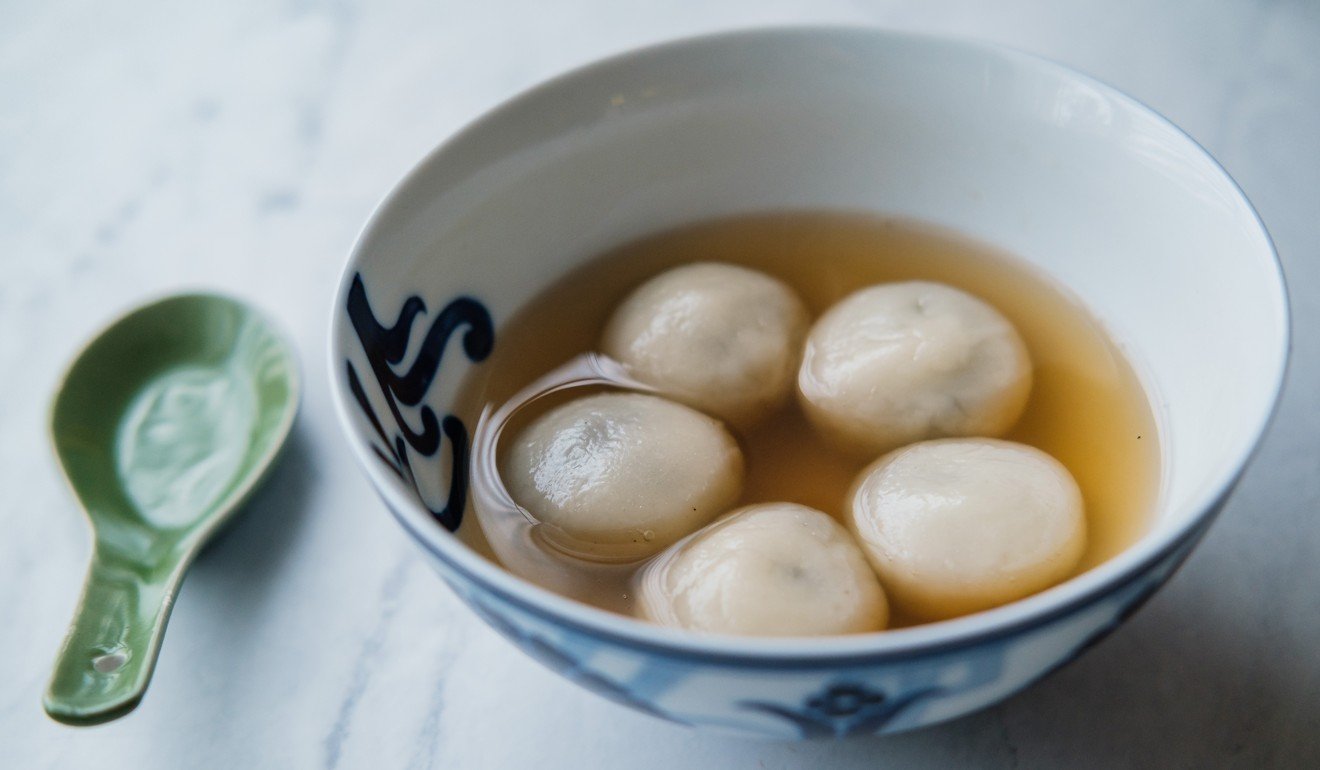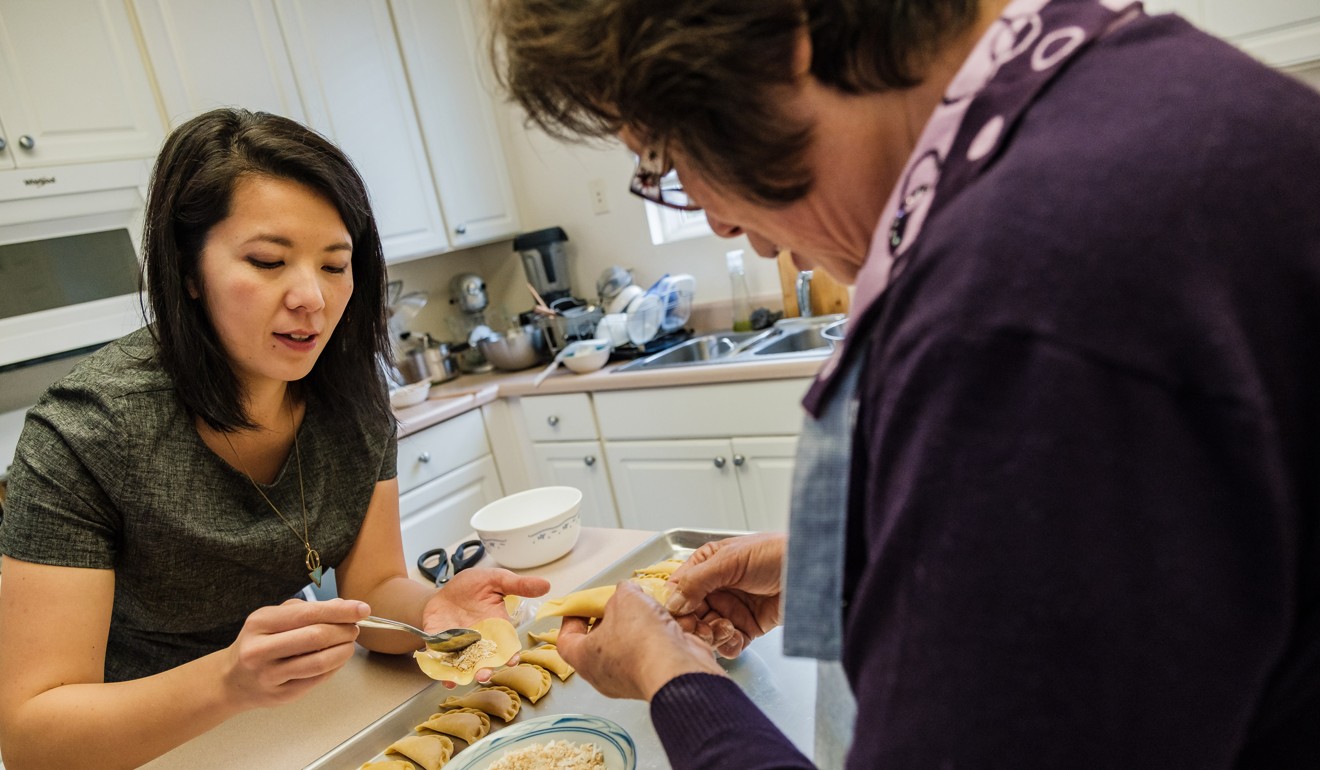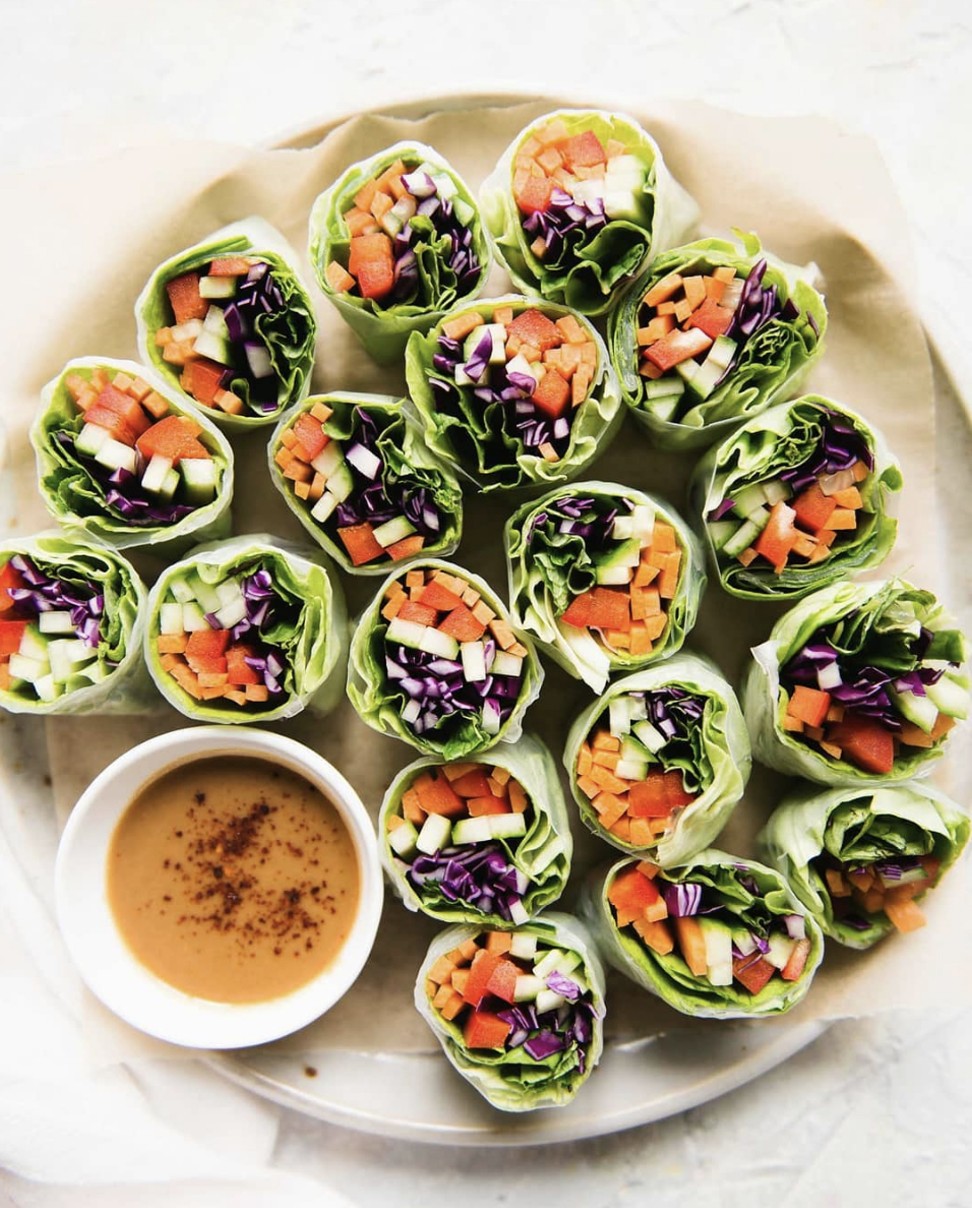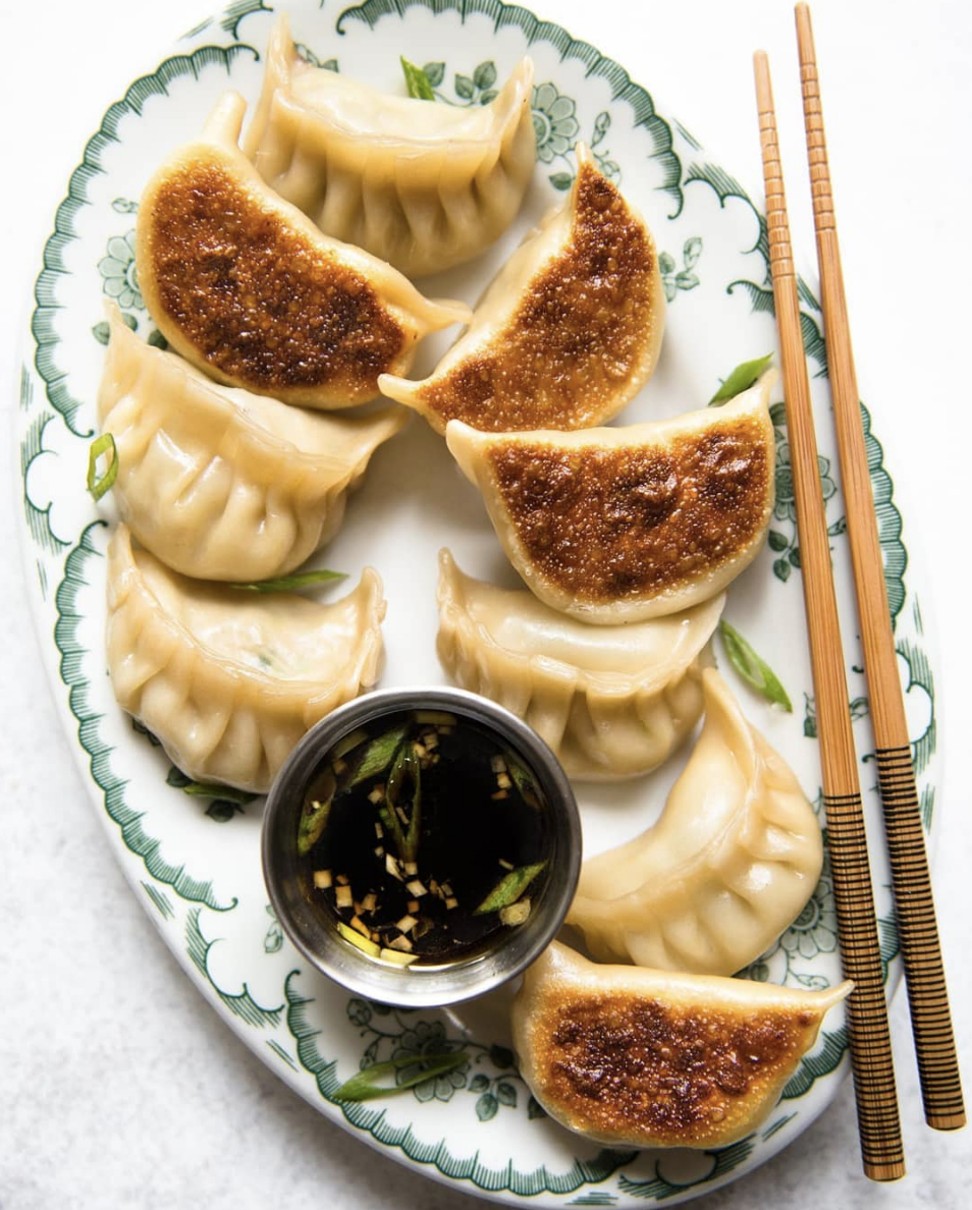
The 73-year-old Chinese Instagram star giving fans a taste of home – and a sense of belonging
- Lan Lin cooks traditional Chinese dishes from her US home while her daughter records and translates
- For her immigrant fans, the videos remind them of dishes they have not eaten since childhood, and of their grandmothers still in China
Lan Lin does not go around telling her friends she is famous on Instagram. For that matter, Lan, 73, is not really sure how Instagram works.
Nevertheless, first-, second- and third-generation immigrants across the United States have rallied around the videos her daughter Lisa, 32, films as she cooks traditional Chinese dishes with her mother.

Although she cannot figure out why, Lan has become an online mother figure and cooking teacher for thousands of young people she has never met.
In an early video posted to Lisa’s Instagram account, Lan stands in her tiny San Francisco kitchen, sporting her favourite floral print apron and pink plastic slippers. She is making an enormous sticky rice casserole, laced with home-made Chinese bacon, dried shrimp and vegetables.
The truth behind foul-mouthed Asian child rapper Lil Tay
As she cooks, she explains the recipe in Taishanese, the dialect she grew up speaking in Taishan, a city in south China’s coastal Guangdong province. Lisa leans over her mother’s shoulder, recording the video on her phone.
“I asked my mom how much rice is in here, and she said seven cups,” Lisa, a lawyer turned food blogger, translates. “But she apparently used this cup to measure it.”
Lan holds up a tiny plastic cup she was handed on her flight to the United States 32 years ago. It has been her standard of measurement ever since.
Lan, or Mama Lin as her daughter affectionately calls her, never relies on exact measurements or precise cooking times, so Lisa retests her mother’s recipes before posting a simplified version to her blog.
For many of Lisa’s 70,000 Instagram followers (@hellolisalin), cooking along is an afterthought, anyway. They watch Lan’s videos for a sense of belonging, a reminder of grandmothers still in China, dishes they have not eaten since childhood, recipes they never thought to learn before moving across the world.
Today, we are at Lisa’s apartment in Sacramento, in the state of California. Lan pours sweet rice flour into a metal bowl to make tang yuan, or black sesame dumplings. Lan, Lisa and their family always make some version of these glutinous rice dumplings for Chinese New Year.
First, Lan weighs the flour on a kitchen scale and sprinkles in tablespoons of hot water, keeping her measurements exact, while she stirs with a chopstick. “This doesn’t feel right,” she says, poking the dough with her fingers. “I’ve been making this without measuring anything for years.”

Despite what her daughter tells her, Lan is not convinced that any of Lisa’s followers actually watch her videos.
“Don’t you think it’s weird that people like watching an old lady, and hearing an old woman’s story?” she asks.
When Lisa recorded the first video, she did not intend to share it. Lan had just turned 70, and Lisa realised she had limited time to learn from her mother. She wanted to post a version of her mother’s peanut candy to her food blog but was struggling to replicate its snappy texture and amber hue.
So she asked Lan to make it while she recorded. When Lisa shared the video on Instagram, hundreds of excited followers reached out.
“That’s when I knew, this was different,” she says.

Jiar Fong, one of Lisa’s followers, came across the videos early last year and felt pangs of homesickness. Fong, 29, had just moved from Malaysia to New York.
I’m targeting an audience that isn’t my mom, but people like me who grew up with these foods but don’t necessarily know how to cook them
“When you live in your home country, all this food that you love is so easy [to find] that you never learn how to make it,” she says. “The minute you move, you wish you remember how your mom made it, how your grandma made it.”
Watching Lisa’s videos, she was overwhelmed. “I teared up, being so far away from home. Now that I watch these videos, maybe when I go back home I’ll record my mom cooking, so that I can keep the recipes in my family.”
When she is filming, Lisa often pauses her translations to show her mother’s eccentricities. In one video, she pans to the busy, patterned apron Lan found in Chinatown for 99 cents. In another, she points out her mum’s little pink radio, balanced on the counter and blasting Chinese opera while Lan cooks.
“I kind of know these are Asian-mom quirks in the back of my head,” Lisa says. “I can spot it immediately. And I present it so other people whose parents are similar can relate to that. I feel like we have a personal connection.”
Gillian Der, another of Lisa’s followers, could not believe what she was hearing when she first came across a video of Lan and Lisa chattering in Taishanese as they shaped and fried sesame balls.
“It meant so much that when I was watching those videos and seeing her make this food with her mom, I was also hearing these familiar sounds that I grew up with,” she says.

Der, 22, was born and raised in Toronto, and only heard Taishanese spoken in her own home. “Growing up, I didn’t have access to amazing cooks like Lisa’s mum, or even my own grandmother,” she says.
“Now I can go to Lisa’s account and watch these videos and see her learning, and it reflects my own learning. When I hear the language and when I see the beautiful food that those two make, it feels like home.”
In 1986, when Lan moved to Portland, in the state of Oregon, from China, she cooked in her brother-in-law’s restaurant. But she did not think of it as a real profession. Now, cooking is a central part of her life.

Lisa takes her mother’s recipes, which often have a dozen spices and other hard-to-find ingredients, and adjusts them for her followers.
“I’m targeting an audience that isn’t my mum, but people like me who grew up with these foods but don’t necessarily know how to cook them,” Lisa says. “I’m thinking about people who might not necessarily have access to the Asian supermarket. I try to simplify.”

Fuchsia Dunlop, the British food writer and cookbook author famous for introducing Western audiences to regional Chinese cooking, knows that sometimes traditional recipes have to evolve and become more accessible as they are passed down through generations.
“Cuisines are living cultures, and they’re always changing,” she says. Dunlop was the first Westerner to train at the prestigious Sichuan Higher Institute of Cuisine, in 1995, and has since adapted and translated hundreds of Chinese recipes for an English audience.
“One shouldn’t be too conservative. You just have to accept that things change, from mother to daughter and father to son.”

Still, Dunlop, who most recently penned the cookbook Land of Fish and Rice, sometimes finds that Chinese cooking phrases or techniques cannot be directly translated into English.
Lisa knows this challenge all too well. In her videos, she regularly trails a few steps behind her mother as she tries to translate, sometimes losing track of what Lan is doing, unable to identify a spice her mother has thrown into the wok.
When Lan is finished adding boiling water to the rice flour for the glutinous rice balls, and the sweet sesame paste is set to chill in the freezer, she pulls a black binder from Lisa’s bookcase. In it are hundreds of pages of Lan’s handwritten notes, with little sketches accompanying every recipe they have made together.
The notes and drawings illustrate things like how to properly fold dumplings, wrap sticky rice in bamboo leaves, dehydrate dried shrimp and properly mix a variety of doughs.

Lan often shakes her head in exasperation when they are done filming, Lisa says. “It would be best if you were still a lawyer,” she’ll say. “I wouldn’t even have to teach you any of this.” No amount of explaining can convince Lan that running a food blog, in this day and age, constitutes a real profession.
After all her kneading is done, and the rice balls are filled with the sesame mixture, Lan drops them, one by one, into a small pot of sugary water, a few slices of ginger bobbing on its surface. She stands over the stove stirring the gelatinous balls with a chopstick until they float to the top, then she spoons them into serving bowls.
The dumplings are supple and stretchy, the filling buttery, molten and sweet.
Instagram worst social media for youth mental health, study says
When we are finished eating, Lan sits on her daughter’s sofa and rests the black binder on her lap. Opening to one of the last blank pages, she begins to sketch and neatly label each step of her process.
Soon, she will hand the notes to Lisa. And as Lan’s admirers begin to meticulously measure out their own tang yuan dough, she will be back in her own kitchen, measuring rice and water and sauce with the same tiny plastic cup she has used for 32 years.

